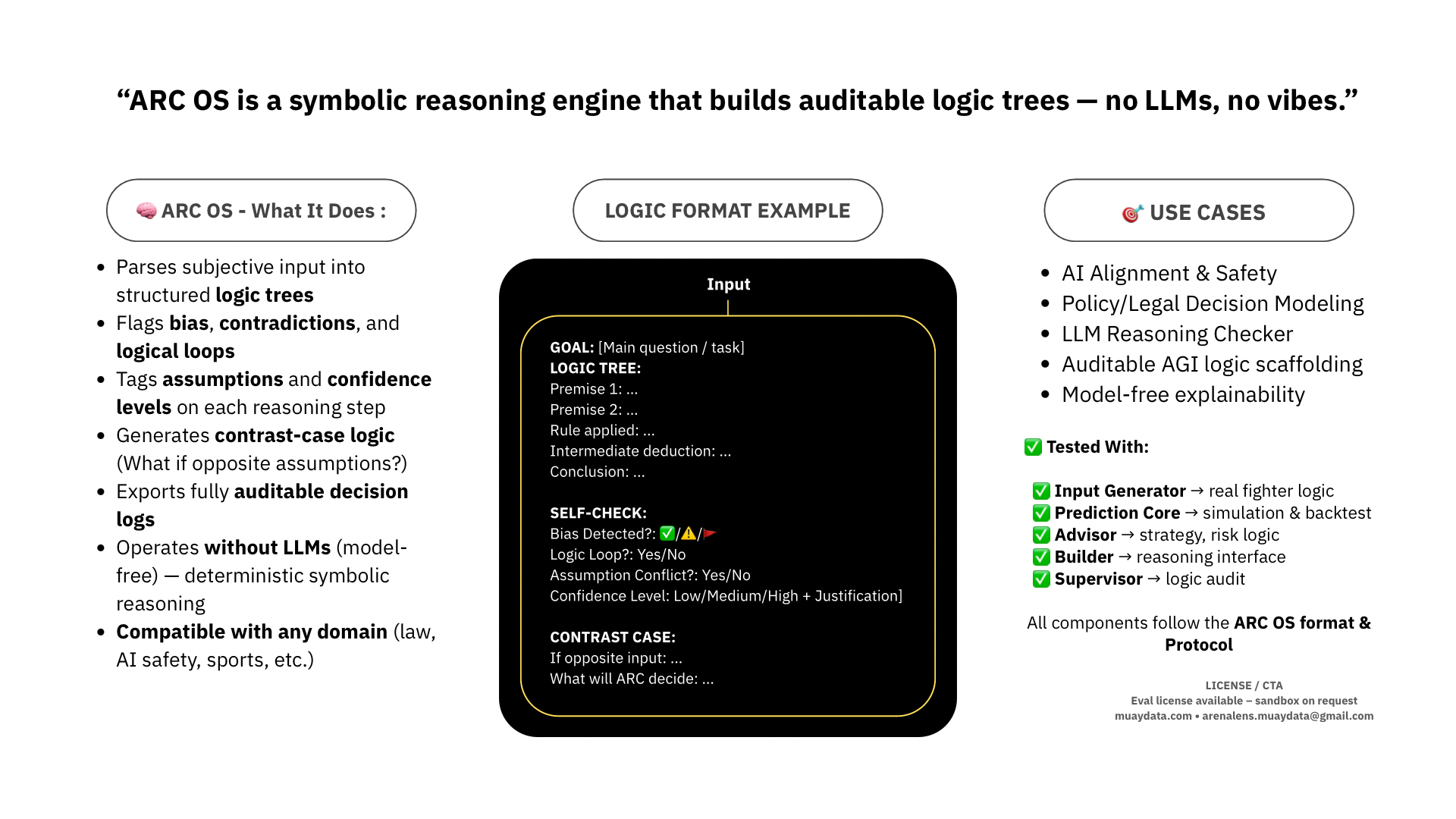ARC OS is a set of guidelines to structure your decisions before using AI like ChatGPT—turning ideas into traceable logic maps. Try it yourself to see if it helps your prompts and outcomes.
ARC OS gives your AI a structure to follow — results depend on how well your prompt and context match.
Main Demo: Explore ARC Builder in action.
Short Demo: Quick overview of Prediction Core.
1. Download the logic spec files arc_logic_stack_v1.5.zip.
2. Paste or add the file ARC_Builder_EN_v1.0_LICENSED into ChatGPT (or Claude, Grok, Gemini), then say:
"Use this as the reasoning framework" — or just "be this one", "function as that".
3. Now you can ask your LLM things like: Prompt template, How to use this spec, Render in L1 / L2 / L3, or any logic-based query. This file is a structure — it guides the LLM to respond with clear logic if your context is clear and specific.
4. You’ll see structured output — assumptions, bias checks, confidence levels, and contrast cases.
If it helps, contact me to discuss further.

Note: Results vary with GPT's interpretation—it's a manual test, not automatic.
⬇️ Download ARC OS Specs 📧 Email if you see potential“I finally understood what GPT missed before.” — Early user feedback𝕏 DM @autononthagorn

No. Paste into GPT for testing.
No, specs to build or test manually.
Yes—it adds structured logic and audits to GPT outputs.
No, but you can build it into one.
You may need to guide it manually or adjust your spec—this is not yet an automated tool.
| License Tier | Includes | Price |
|---|---|---|
| Evaluation License | Read-only, internal use, sandboxed | $0 |
| Standard Deploy | Use in agent, closed-source system | $1,500 |
| Institutional License | Research orgs, ethics bodies, critical tools | $4,000 |
| Exclusive License | Full-stack control, modifiable, version export | Contact |
Paid licenses allow you to build logic-based tools using ARC OS specs — like GPT agents, prompt validators, or decision scripts. Evaluation is for manual use only.
ARC OS is governed by Logic Attribution License v1.5.